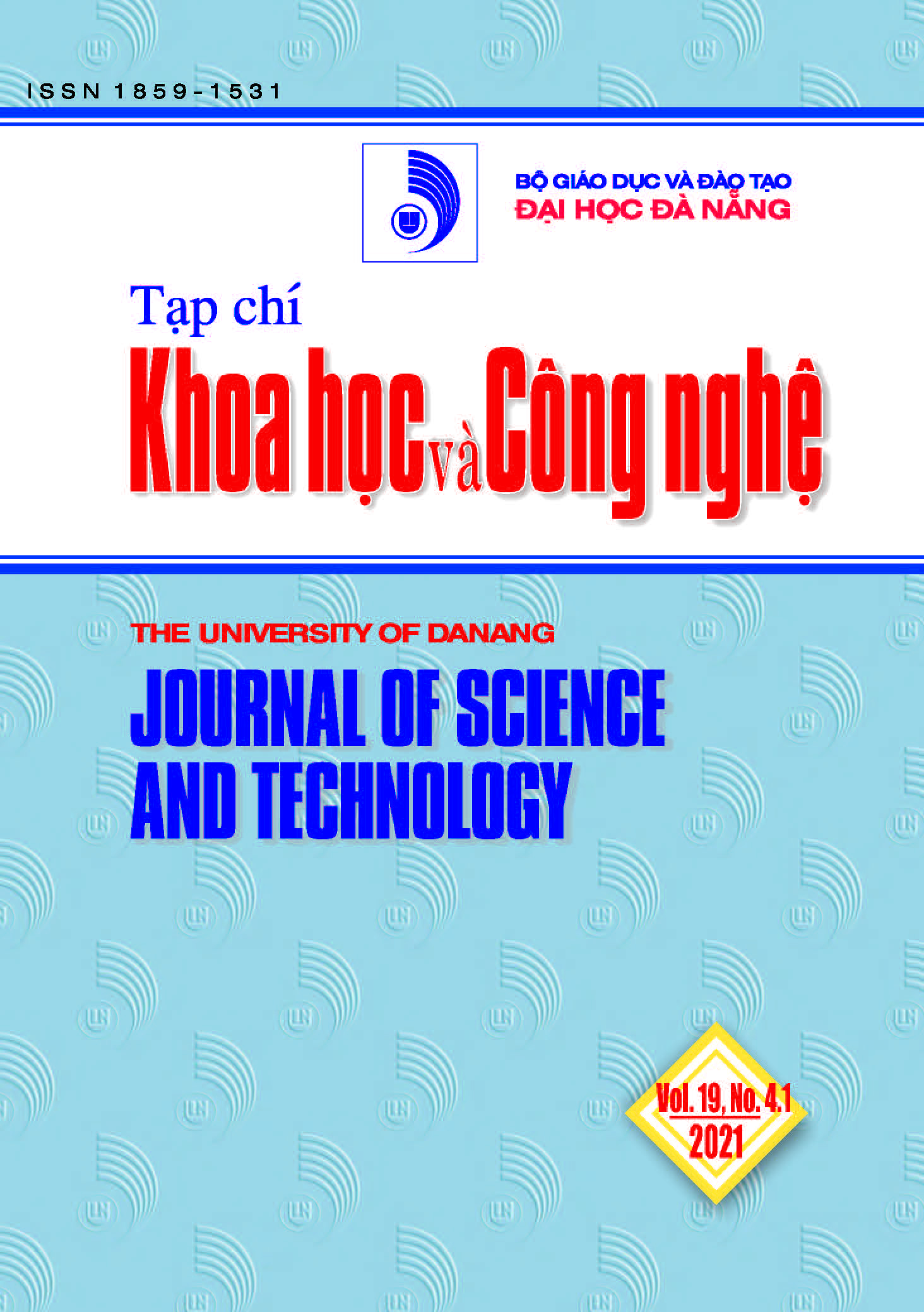Phân vùng tổn thương da từ ảnh soi da bằng mô hình SegUnet
 Tóm tắt: 220
Tóm tắt: 220
 |
|  PDF: 484
PDF: 484 
##plugins.themes.academic_pro.article.main##
Author
-
Phạm Văn Trường, Trần Thị Thảo
Từ khóa:
Tóm tắt
Phân tích ảnh soi da là một trong các kỹ thuật được quan tâm trong nghiên cứu ung thư da. Trong phân tích ảnh soi da, việc phân vùng chính xác vùng da bị tổn thương đóng một vai trò quan trọng. Nghiên cứu này đề xuất một mô hình phân vùng tổn thương da từ ảnh soi da bằng mô hình học sâu-SegUnet. Mô hình đề xuất kế thừa những ưu điểm của hai mô hình UNet và SegNet, như khả năng trích chọn các thông tin thô và tinh từ ảnh đầu vào của U-Net; Tính hiệu quả trong tính toán của SegNet. Chúng tôi cũng đề xuất sử dụng phép chuẩn hóa trung bình-phương sai để thay cho phép toán chuẩn hóa theo mẻ như trong các mô hình gốc để giảm số tham số của mô hình. Mô hình được áp dụng trên bộ dữ liệu ISIC 2017 gồm 2000 ảnh huấn luyện và được đánh giá trên một bộ dữ liệu thử nghiệm gồm 600 ảnh. Kết quả cho thấy, mô hình SegUNet cho độ chính xác cao nhất 93,1%, hệ số Dice 0,851, đã chứng minh tính hiệu quả của phương pháp đề xuất.
Tài liệu tham khảo
-
[1] R. L. Siegel, K. D. Miller, and A. Jemal, "Cancer Statistics, 2020”, CA CANCER J CLIN vol. 70, pp. 7–30, 2020.
[2] R. Siegel, K. Miller, and A. Jemal, "Cancer statistics, 2018”, CA Cancer J. Clin., vol. 68, pp. 7–30, 2018.
[3] L. Bi, J. Kim, E. Ahn, A. Kumar, M. Fulham, and D. Feng, "Dermoscopic image segmentation via multi-stage fully convolutional networks”, IEEE Trans. Biomed. Eng., vol. 64, pp. 2065-2074, 2017.
[4] L. Bi, J. Kim, E. Ahn, and D. Feng, "Automatic skin lesion analysis using large-scale dermoscopy images and deep residual networks”, in arXiv:1703.04197, Available: https://arxiv.org/abs/1703.04197, 2017.
[5] C. Cernazanu-Glavan and S. Holban, "Segmentation of bone structure in X-ray images using convolutional neural network”, Adv. Electr. Comput. Eng., vol. 13, pp. 87-94, 2013.
[6] M. Melinšˇcak, O. Prentaši´c, and S. Lonˇ cari´c, "Retinal vessel segmentation using deep neural networks”, in Proc. 10th International Conference on Computer Vision Theory and Applications, 2015, pp. 577–582.
[7] J. Long, E. Shelhamer, and T. Darrell, "Fully convolutional networks for semantic segmentation”, Proc. of the IEEE Conference on Computer Vision and Pattern Recognition (CVPR), pp. 3431–3440, 2015.
[8] A. Garcia-Garcia, S. Orts-Escolano, S. Oprea, V. Villena-Martinez, and J. Garcia-Rodriguez, "A review on deep learning techniques applied to semantic segmentation”, arXiv: 1704.06857, 2017.
[9] P. V. Tran, "A fully convolutional neural network for cardiac segmentation in short-axis MRI”, Available: https://arxiv.org/abs/1604.00494, 2016.
[10] H. Noh, S. Hong, and B. Han, "Learning deconvolution network for semantic segmentation”, in Proc. of the IEEE International Conference on Computer Vision, 2015, pp. 1520-1528.
[11] O. Ronneberger, P. Fischer, and T. Brox, "U-net: Convolutional networks for biomedical image segmentation”, in Proc. Int. Conf. Med. Image Comput. Comput.-Assist. Intervent., 2015, pp. 234-241.
[12] V. Badrinarayanan, A. Kendall, and R. Cipolla, "E: A deep convolutional encoder-decoder architecture for image segmentation”, IEEE Trans. Pattern Anal. Mach. Intell., vol. 39, pp. 2481–2495, 2017.
[13] L. Yu, H. Chen, Q. Dou, J. Qin, and P. A. Heng, "Automated melanoma recognition in dermoscopy images via very deep residual networks”, IEEE Trans. Med. Imaging, vol. 36, pp. 994-1004, 2017.
[14] Y. Yuan, M. Chao, and Lo, Y. C., "Automatic skin lesion segmentation using deep fully convolutional networks with Jaccard distance”, IEEE Trans. Med. Imaging vol. 36, pp. 1876-1886, 2017.
[15] N. Ibtehaz and M. S. Rahman, "Multiresunet: Rethinking the U-Net architecture for multimodalbiomedical image segmentation”, Available: https://arxiv.org/abs/1902.04049, 2019.
[16] Y. Tang, F. Yang, S. Yuan, and C. A. Zhan, "A multi-stage framework with context information fusion structure for skin lesion segmentation”, in Proc. IEEE 16th International Symposium on Biomedical Imaging (ISBI 2019), 2019, pp. 1407–1410.
[17] K. Simonyan and A. Zisserman, "Very deep convolutional networks for large-scale image recognition”, pp. arXiv preprint arXiv:1409.1556, 2014.
[18] K. He, X. Zhang, S. Ren, and S. Sun, "Deep residual learning for image recognition”, [Online]. Available: https://arXiv:1512.03385, 2015.
[19] G. Huang, Z. Liu, and K. Q. Weinberger, "Densely connected convolutional networks”, arXiv:1608.06993, 2016.
[20] C. Szegedy, W. Liu, Y. Jia, P. Sermanet, S. Reed, D. Anguelov, et al., "Going deeper with convolutions”, in Proc. IEEE Conf. Comput. Vis. Pattern Recognition, 2015, pp. 1-9.
[21] Y. Xue, T. Xu, H. Zhang, L. R. Long, and X. Huang, "SegAN: Adversarial network with multi-scale L 1 loss for medical image segmentation”, Neuroinformatic, vol. 16, pp. 383-392, 2018.
[22] Y. Yuan and Y.-C. Lo, "Improving dermoscopic image segmentation with enhanced convolutional-deconvolutional networks”, IEEE J. Biomed. Health Inform., vol. 23, pp. 519-526, 2019.
[23] S. M. K. Hasan and C. A. Linte, "U-NetPlus: A modified encoder-decoder U-Net architecture for semantic and instance segmentation of surgical instruments from laparoscopic images”, Proc. 41st Annu. Int. Conf. IEEE Eng. Med. Biol. Soc. (EMBC), pp. 7205-7211, Jul. 2019.
[24] Z. Zhou, M. M. R. Siddiquee, N. Tajbakhsh and J. Liang, “UNet++: Redesigning skip connections to exploit multiscale features in image segmentation”, IEEE Trans. Med. Imag., vol. 39, no. 6, pp. 1856-1867, Jun. 2020.
[25] D. Daimary, M.B. Bora, K. Amitab, D. Kandar, “Brain tumor segmentation from MRI images using hybrid convolutional neural networks”, Procedia Comput. Sci., vol. 167, pp. 2419-2428, 2020.



